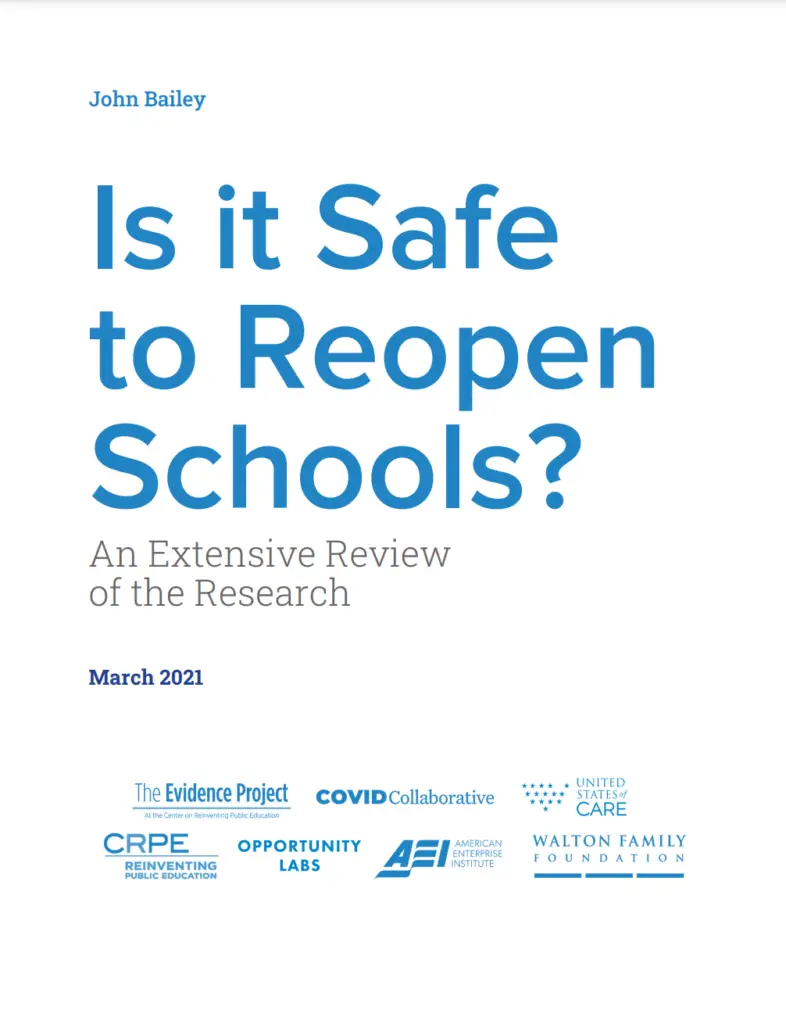Watch a recording of the press panel with John Bailey.
One year after nationwide public school closures, a growing body of medical research and the firsthand experiences of school systems worldwide can provide a sound basis for determining a reopening strategy. This report examines the collective findings of more than 120 studies and considers their implications for current decisions. These studies cover a wide array of topics, including risks for children, transmissibility concerns, and the impact of school reopenings on community spread.
Key Findings
- The vast majority of research from around the world suggests that children comprise a small proportion of diagnosed COVID-19 cases, develop less severe illness, and have lower mortality rates.
- Studies suggest attending school does not increase risk to children, particularly if health protocols are followed.
- Evidence points to schools mirroring the transmission rates of their communities. Schools themselves do not appear to drive community transmission.
- Protective measures such as mask wearing, physically distancing, increasing hygiene regimens, and improving ventilation add layers of protection that can mitigate risks for students and school staff.
- COVID-19 vaccinations, symptomatic testing and isolating potentially infected individuals, and asymptomatic COVID-19 screening tests offer additional preventative benefits.
- Any public health benefit gained from school closures must be weighed against the significant—and potentially lasting—costs imposed on individual students and society as a whole.
- A growing body of research suggests children face greater health risks due to missed health screenings, food insecurity, and mental health challenges.
- Severe learning loss for many children, particularly children of color, will lead to lower educational attainment and lower future earnings.
The Path Forward
As more research becomes available, leaders must continuously evolve their strategies. Managing the uncertainty and risks created by new variants of the coronavirus requires doublingdown on proven mitigation measures and protocols.
Closing schools should be a last resort and done only after all other community mitigation measures have been deployed. In such cases, there should be extreme urgency to reopen schools as quickly and safely as possible.
State and local leaders should default to having students attend school in person and then adjust based on community risk factors and the capacity to implement essential health protocols.




